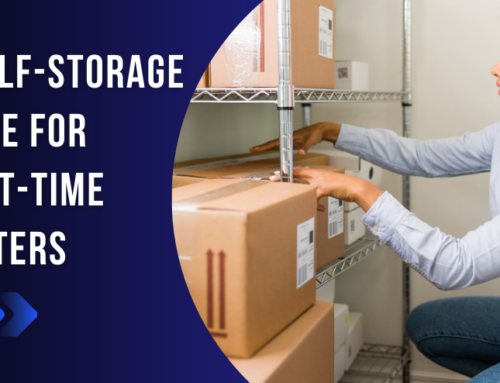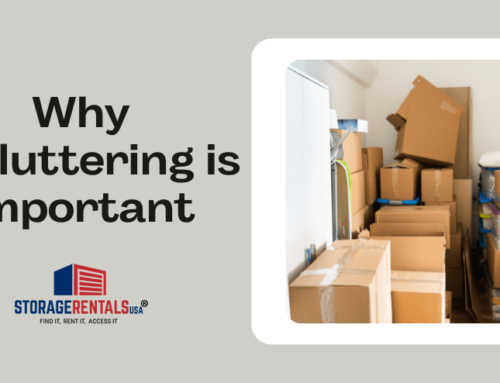When you have finished your search for the perfect local self-storage company, it’s time to get your unused belongings packed up safely and ready to move. You most likely want to preserve these belongings so you need to do everything possible to ensure nothing is damaged or broken during the moving process.
Packing your items away safely and securely is probably more labor intensive than you realize. We’ve listed 10 important tips to ensure your items arrive as they should when being moved into a self-storage unit.
- Tip #1 Good quality boxes and packaging material are important.
It’s easy to find free boxes at grocery or big box stores around town, but they have already served their purpose of shipping items around the country, and may no longer have the strength and protection your important items need. You can find good, sturdy boxes at the local hardware store or you can purchase directly from the storage facility.Plastic containers are another good option, but will be more expensive. This option, however, will provide better protection against water damage or any abuse that may occur during the move. While you’re out buying your boxes, be sure to stock up on strong packing tape, newspaper, packing peanuts or bubble wrap, and a permanent marker to label the side boxes.It is also a good idea to have a few extra boxes, packing tape, and permanent markers that will be kept in the storage unit. If you have to unpack boxes to retrieve items, things can quickly become chaotic, so keeping extra packing materials on hand can prevent things from getting out of control.
- Tip #2 Be sure to pack all items properly.
When filling your boxes with items try to use as much of the inside space as possible. Fill any gaps in space with newspaper and/or packing peanuts or bubble wrap. Items are much more likely to shift around, and possibly be broken or damaged, during the move when there is too much extra space in the box. It is also recommended to pack books flat to prevent damage to the spines. When the box has been packed properly, add tape along the edges for extra security and tape the box flaps down.Keep weight in mind when filling your boxes. It is recommended to never lift more than 50 lbs unassisted to avoid injury. - Tip #3 Use old blankets, sheets and towels for extra padding and protection.
These items are perfect for wrapping artwork, framed photos, fragile decorative items, dishes, and more. - Tip #4 Keep items in storage clean.
For large items, like furniture, that will not be packed into boxes, you can use old blankets and sheets to keep them dust free while in the storage unit. If you don’t have any extras, you can always purchase inexpensive ones from a thrift store or bargain shop. Paint tarps are a good option too, but are going to be more expensive. - Tip #5 Rent the right type of moving truck.
Borrowing a friend’s truck (or even using your own) may seem like a good cost saving idea, but in truth, eliminating the extra costs associated with multiple trips to and from the self-storage unit actually saves you money when you rent a moving van. Be sure you know the size you need before renting to avoid an overloaded vehicle that will require extra trips. - Tip #6 Organize your belongings as you unload them.
There have been many times a person who has stored items in self-storage finds they need access to certain items. Before you even get to the storage unit to unload your belongings, have a list prepared of the items you may need access too. Rarely used items and furniture can be placed at the back of the unit, while items you may need in the near future can be placed closer to the door. - Tip #7 Never stack heavier items on top.
Heavy items like TVs, file boxes, or area rugs should always be placed on the floor. While it may seem fine when you place them on top of other items, their weight will crush whatever is underneath in time when not properly stacked. - Tip #8 Remove table legs.
A simple way to free up more storage space is by removing table legs, and storing the table flat against the wall. - Tip #9 Make a map of your storage unit.
As you fill and stack your storage unit, it becomes quite easy for boxes and loose items to get buried under other stuff. Creating a detailed map as you move items in will help you find items when you need them, or when it is time to move your belongings out of storage. It’s a good idea to group similar items together like kitchen supplies, bedding, clothes, etc. You can also group items together for each member of your household. - Tip #10 Use your camera!
Before you begin packing and loading items for the move to the storage facility, it’s a good idea to take pictures for later reference. Complicated wiring setups, like the back of your TV, are easy to forget once everything is unhooked. You can also take pictures of decorative arrangements to easily recreate the setup once you move your items out of storage. In addition to the map you created, you can take pictures of items as you place them in the unit to use later on to locate items when you need them.

 Open 24 hours
Open 24 hours






Leave A Comment